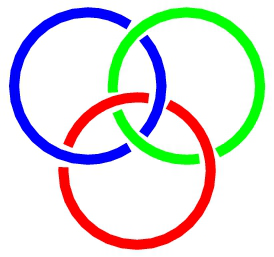Orateur
Prof.
Charlotte Elster
(Ohio University)
Description
Traditionally three-nucleon calculations are carried out by solving Faddeev
equations in a partial wave truncated basis, working either in momentum
or in coordinate space. In Ref.~\cite{1} the Faddeev equations were solved
directly as function of vector
variables for scattering at intermediate energies. The key advantage of
this formulation lies
in its applicability at higher energies, where special relativity is
expected to become
relevant. We investigate relativistic three-boson scattering
in the framework of Poincar\'{e} invariant quantum
mechanics~\cite{wigner}.
The main points are the construction of unitary irreducible
representations of the Poincar\'{e} group, both for noninteracting and
interacting particles.
The application to three-body scattering is based on the Faddeev
scheme, which is reformulated
relativistically. The usage of Poincar\'{e}-Jacobi momenta leads to
various algebraic
modifications of corresponding standard nonrelativistic expressions.
Due to its dependence
on the total momentum, the two-body off-shell t-operator entering the
Faddeev equation
acquires additional momentum dependence beyond the usual energy shift
which is characteristic
in nonrelativistic calculations. We handle this by using a first
resolvent method~\cite{2} and thus
can exactly solve for the relativistic two-body operator embedded in
the three-body system~\cite{3}.
Comparison of the relativistic and non-relativistic calculations lead
to observations the should be also relevant for realistic
interactions~\cite{4,5}.
This comparison does not involve a non-relativistic limit, instead
relativistic and non-relativistic three-body calculations with
interactions fitted to the same two-body data are compared. All of the
differences result from the different ways in which the two-body
dynamics appears in the three-body problem.
References:
{1} H. Liu, Ch. Elster, W. Gl\"ockle, Phys. Rev. C{bf 72}, 054001 (2005).
{wigner} E.P. Wigner, Ann. Math. {\bf 40} 149 (1939).
{2} B.D. Keister, W.N. Polyzou, Phys. Rev. C{\bf 73}, 014005 (2006).
{3} T. Lin, Ch. Elster, W.N. Polyzou, W. Gl\"ockle, Phys. Rev. C{\bf 76} 014010 (2007).
{5} T. Lin, Ch. Elster, W.N. Polyzou, H. Witala, W. Gl\"ockle, arXiv:0801.3210 [nucl-th], to appear in Phys. Rev. C.
Auteur principal
Prof.
Charlotte Elster
(Ohio University)
Co-auteurs
Dr
Ting Lin
(Ohio University)
Prof.
Walter Gloeckle
(Ruhr-Universitaet Bochum)
Prof.
Wayne Polyzou
(University of Iowa)

